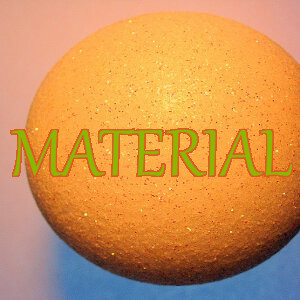Silicone Rubbers
Silicone rubbers can be widely used for mold making.
Perhaps their most important feature is that they do not adhere (stick) to most of the materials therefore they are excellent for casting of products and prototypes.
They are available in transparent appearance which allows the casting process to be controlled visually. In other cases, also the color version can be used.
The following main considerations should be taken into account when selecting silicone rubbers.
- Hardness (Shore A)
- Break elongation
- Biocompatibility for medical application or food industry
- Thermal resistance for casting of low temperature alloy
Scroll down to the bottom of the page for more information on types of silicones, usable additives, storage suggestions and about the selection of the apropriate type of silicone.
The two-component RTV (room temperature vulcanisation) silicone rubbers can be distinguished
- condensation silicones
- addition cure silicones
The main features of condensation silicones
- Low tear resistance
- Mostly not translucent 1-2% shrinkage after fully being cured
- Usually 1 day curing time
- Vacuuming is not allowed, so it is difficult to make a bubble-free mould
Addition cure silicones
- High tear resistance
- Translucent version is the most widespread design but easy to color
- Practically 0% volume shrinkage
- Various curing times, which can be increased and decreased with additives and/or thermal treatment
- Can be freed from air bubbles by vacuum
Liquid silicone modifiers and additives:
- Thixotropic additive which seriously increases the viscosity and makes the mixture spreadable. This is unnecessary for the ab ovo thixotropic ZA 22 Thixo Body.
- Coloring pigment. Be sure to use only additives that are compatible to two-component silicones.
- Retarder agent: This can slow down the curing time of the liquid silicone polymerization. That means, we can increase the pot life. Sometimes this may be necessary for comfortable processing and accurate work.
- Accelerating additive: In contrary to the former point, we can accelerate the hardening process and make the manufacturing more productive. Note that curing time can also be accelerated by heat treatment.
- Mold release
Use and storage of two-component casting silicones:
- Unlike other DIY resins offered for home application, the addition cure two-component liquid silicones can be stored for years without any deterioration of their quality.
- Neither the components, nor the hardened silicone are hazardous. However, all substances can cause allergic reaction after a while, so it is recommended to wear protective gloves.
- Keep containers of components clean and away from other materials. Wipe the container and closure before use to avoid interaction of the components. Otherwise store it free of dust.
- Store the components at room temperature.
- Store preferably in a dark place.
- When first opening, label the containers with date which will help you remember the age of the resin.
- Do not put back any substance leftovers in the container. We recommend you should measure exactly what we intend to use up.
- Be sure not to replace the lids. To do so you may want to use a tag.
- The components of liquid silicones are not inclinable to sedimentation, although it is a good idea to homogenize the material first before weighing.
The table below will help you to select the most appropriate type of silicone for your ongoing project.
Remark:
All types of silicone are suitable for tool making and mold casting.
The recommended field of application indicates only what the given type is best suited for.
| Type of Silicone | Mix Ratio | Pot lLfe | Curing Time |
Viscosity of Mixture cPs |
Tear Strength (N/mm) | Hardness (Shore A) | Color | Field of Application | Required Experience |
| ZA 4 LT | 1:1 | 10 min. | 1,5 h | 1700 | N/A | 4 | light red | pad & silk-screen printing | advance |
| ZA 13 WT 45 | 1:1 | 45 min. | 7 h | 4500 | >10 | 13 | transparent | general tooling | beginner |
| ZA 22 | 1:1 | 15 min. | 1 h | 4000 | 20 | 22 | blue | general tooling | beginner |
| ZA 22 Thixo | 1:1 | 6 min. | 15 min. | N/A | N/A | 22 | skin | masking | beginner |
| HT 33 | 1:1 | 20 min. | 3 h | 7000 | 16 | 33 | transparent | low melting metal casting, jewellery moulding | advance |
| HT 45 | 1:1 | 10 min. | 1 – 1,5 h | 8000 | 19 | 45 | transparent | general tooling | advance |
| ZAX 60 | 10:1 | 60 min. | 24 h | 100000 | >10 | 60 | white | general tooling | professionel |








